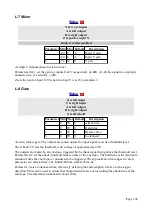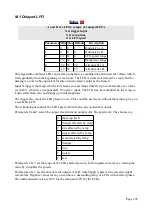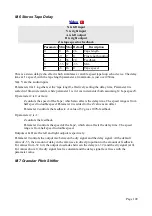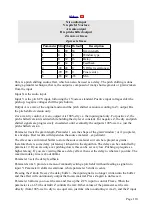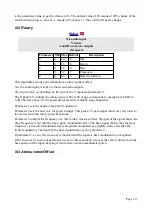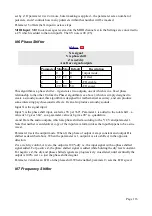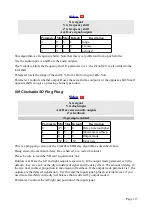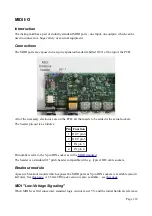
M-2 Scaled LFO
A and B are LFOs
X and Y are min/max or offset/scale
Z is LFO speed
Parameter Min Max Default
Description
0
0
6
1
Output type A.
1
0
6
0
Output type B.
2
-32 32
0
LFO speed range.
3
0
1
0
Mode.
4
-48 48
0
X Offset.
5
-48 48
0
Y Offset.
This algorithm generates LFOs, the amplitude and DC offset of which is controlled by the input
CVs, according to parameter 3 ('Mode').
If parameter 3 is zero, the X & Y inputs set the minimum and maximum values that the LFO will
reach. For example, if X is 3V and Y is 5V, the LFOs will sweep between 3-5V, or to look at it
another way, the LFOs will be centred at 4V, with a peak-to-peak amplitude of 2V.
If parameter 3 is one, the X input sets the centre of the LFO, while the Y input sets its amplitude.
For example, if X is 3V and Y is 1V, the LFOs' range will be 2V-4V. Note that in this mode if Y is
zero, then A & B follow X. If X is a pitch CV, then you effectively have a vibrato control on Y.
The Z knob/input controls the LFO speed, which is an exponential control.
Parameters 0 and 1 select the output waveforms on outputs A & B respectively. The choices are:
0 triangle
1 sine
2 square
3 rising ramp
4 falling ramp
Parameter 2 sets the range of the LFO speed, in quarter octaves (i.e. raising the value by 4 doubles
the speed).
Parameters 4 & 5 are offsets applied to inputs X & Y respectively. They are scaled in twelfths of a
Volt, so if interpreted as pitch CVs, in semitones.
Page 106













